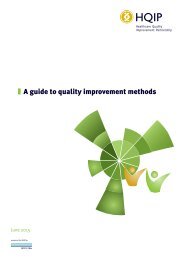2fyY1Py
2fyY1Py
2fyY1Py
Create successful ePaper yourself
Turn your PDF publications into a flip-book with our unique Google optimized e-Paper software.
Cognitive models of advertising defence assume that viewers respond rationally to advertising information. Yet, emotional<br />
advertising was found to be most effective in a study of over 800 advertising campaigns (156), and emotions are processed<br />
differently from cognition, driving rapid decision-making (157). Modern psychological models predict that, even without<br />
conscious awareness, non-conscious (implicit) processing of advertising can influence beliefs and behaviour (154, 158),<br />
again challenging a cognitive-based ad defence model. In digital media, where marketing is often less recognizable,<br />
advertising may be processed implicitly even more often. On webpages, children could not consistently recognize simple<br />
static advertisements, even at 10–12 years of age (159), and identifying marketing is likely to be still more difficult in social<br />
media where the boundaries between marketing and other content are increasingly blurred. For example, in early 2015,<br />
Facebook adjusted its “News feed” algorithm to favour marketing posts that are less overtly promotional (160); the rise in<br />
the use of ad blockers means that less overt but still powerful forms of advertising are increasingly being used (161). Taken<br />
together, these findings indicate that advertising operates effectively through emotional, unconscious routes and that this<br />
may apply especially to digital media.<br />
Of particular concern in this regard are adolescents, who have been largely excluded from discussions about food<br />
marketing and to whom HFSS brands argue it is ethical to advertise (see e.g. Mars marketing code; 26). Adolescents are<br />
developmentally, neurologically and socially likely to be susceptible to HFSS advertising (162): despite increasing cognitive<br />
ability, they may be more impulsive, because of neurological and hormonal changes, and they are typically more subject<br />
to peer influence, including regarding risky decision-making. In contrast to older adolescents and younger children, young<br />
adolescents aged 12–14 years are more likely to heed the behaviour of adolescent peers and less likely to follow adults<br />
regarding risky behaviour (163). In addition, adolescents typically have independent spending money and, in countries such<br />
as Cyprus, Ireland and the United Kingdom, have been found to use “fast” and “junk” foods as an identity marker to set<br />
them apart from adults (164–168).<br />
Overall, therefore, suggestions that “advertising literacy” increases the resistance of older children to food advertising<br />
are not supported (154, 155). Policy and industry self-regulation – focused on protecting young children from television<br />
advertising that is consciously, cognitively processed – have been “eclipsed” by technological and commercial innovation in<br />
digital marketing (99, p. 5), by recent understanding of the effects of emotional and unconsciously processed advertising<br />
and by growing insight into the susceptibility of adolescents.<br />
Research in digital food marketing to children:<br />
challenges and solutions<br />
The foregoing depicts a global digital media landscape in which children and food marketers are active, parents have little<br />
awareness, and children receive little meaningful protection. Vast amounts of data on young people’s online activities<br />
and offline locations are collected, stored and analysed to deliver targeted, often personalized marketing. Detailed bioneurosensory<br />
measures are combined with data analytics to identify advertising with peak impact and consumers’<br />
moments of peak vulnerability, and ads are developed to engage powerful emotions in order to encourage young people<br />
to share them freely within their social networks. This scenario presents public health research and policy with challenges<br />
on a scale previously not encountered by those whose concern is the health and well-being of children. In this section, we<br />
outline the many research challenges facing the field, highlight areas in need of development and point to some potential<br />
solutions.<br />
Challenges in exploring children’s engagement with digital marketing<br />
There are many challenges in this new, fast-changing domain. Information on children’s exposure to and engagement with<br />
marketing in digital media is difficult to access. A literature review conducted on behalf of the United Kingdom Committee<br />
of Advertising Practice (12) called for more sophisticated research to establish how many children visit particular websites,<br />
for how long they engage with content, the extent to which adolescents are exposed to location-based targeting and<br />
16






